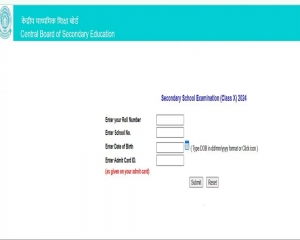The standards published research papers have gone down significantly as now it is not about enhancing knowledge but a means to get a job.
The true goal of the research is the improvement of the quality of human life through the addition of reliable, usable knowledge. Honestly and ethically conducted research and communication of the results to society is a long-drawn-out and rigorous process. Researchers' tireless efforts, thorough basic research, experimental findings, and exhaustive literature search make the research unique. Such a study is published as a "research paper" only after a stringent review process (peer review) by editors and subject experts of credible journals. It indicates that quality is the soul of the research.
But over the last few decades, research has been linked and made compulsory for the recruitment and promotion of researchers/teachers from higher educational institutions. Therefore, the number of papers published has been given more importance without a thorough evaluation of the papers themselves. This has led to the production of research papers in thousands of predatory journals. Moreover, the weightage or marks have also been assigned to papers if published in the high "Impact Factor" journal. As a result, the researcher's new agenda is to publish more and more papers in journals claiming high Impact Factors.
In the sixties of the 20th century, Eugene Garfield, an American linguist, invented a technique to quantitatively measure the "Impact Factor" of a journal. He used the reference list given in the research paper. A reference is a citation to an earlier paper. Thus, the citation is the linkage between the two papers having a similar area of research. A journal's impact factor is calculated based on the citations received by a particular research paper, especially within two years after the date of publication. Hence, the impact factor of the journal depends on the citations received for papers published in that journal. More citations resulted in a high impact factor for the journal. So, the references play a key role. Garfield initially selected 300 journals which later increased in number. These journals are referred to as "indexed journals". Today these indexes are the most popular citation databases known as "Web of Science" published by Clarivate Analytics, USA, and are accessible on a subscription basis. The company publishes "Journal Citation Report" (JCR) in June every year which lists impact factors for approximately 14000 journals.
Citation analysis is useful to reveal highly cited authors and research, research productivity of institutes, universities, and countries. It is also used as one of the parameters in ranking universities. Garfield predicted and also cautioned that in the '80s that such statistical calculations would be misused on a large scale.
Researchers and teachers working in universities and colleges do not have complete knowledge about citation databases and the "impact factor" of journals, nor do they want to know. Taking advantage of this, bogus predatory journals flourished. Even print journals were assigned an "Impact Factor". So, taking advantage of the ignorance of the researchers, bogus companies introduced more than 25 fake impact factors. Moreover, impact factors can be purchased. There is a huge competition between authors, researchers, and publishers to get more citations.
Even editorial board members of credible journals, unknowingly accept papers based on fake information and data sets. Artificial Intelligence is now used for preparing machine-generated research papers. Groups of subject experts write papers to earn huge sums of money. Many companies have sprung up all over the world to prepare research papers for profit, are "Paper Mills". In many cases, the text in those papers is meaningless.
Reputable publishers have launched the "Gold Open Access" publishing model in the last few decades which is gaining popularity among researchers. In this, the researcher has to pay Article processing charges (APCs) for publishing the papers. Although these fees are accepted only after peer review of the paper, these fees are quite high and range from 1.5 lakhs to 20 lakhs or more. This allows the readers to read the papers freely. As papers are open to all it is expected to fetch more citations to increase the impact factor of the journal. Compared to the sciences, humanities have fewer research journals. As a result, the journals indexed in citation databases have low impact factors. In the case of fine arts, the path of the teacher-artist is difficult because they must keep their art alive even while teaching students. As a result, evaluating the work of teacher-artists should be done on a different parameter, based on their performances rather than on published work.
During COVID days there was information about the discovery of a vaccine and/or cure. Thousands of papers were published in many journals. Publishing wrong research for personal growth is harmful to society. Quality information facilitates the generation of new knowledge. Every researcher should ask the question. What kind of valuable knowledge are we going to preserve for future generations if it is based on dishonest research? The bogus journals that exist to print shoddy research, deliberately created fabricated citations and false impact factors are all signs of the decline of humans and not of progress.
(Author is Associate Professor, Department of Library and Information Science and Co-ordinator, Centre for Publication Ethics, Savitribai Phule Pune University, Pune. The views expressed are personal)


























